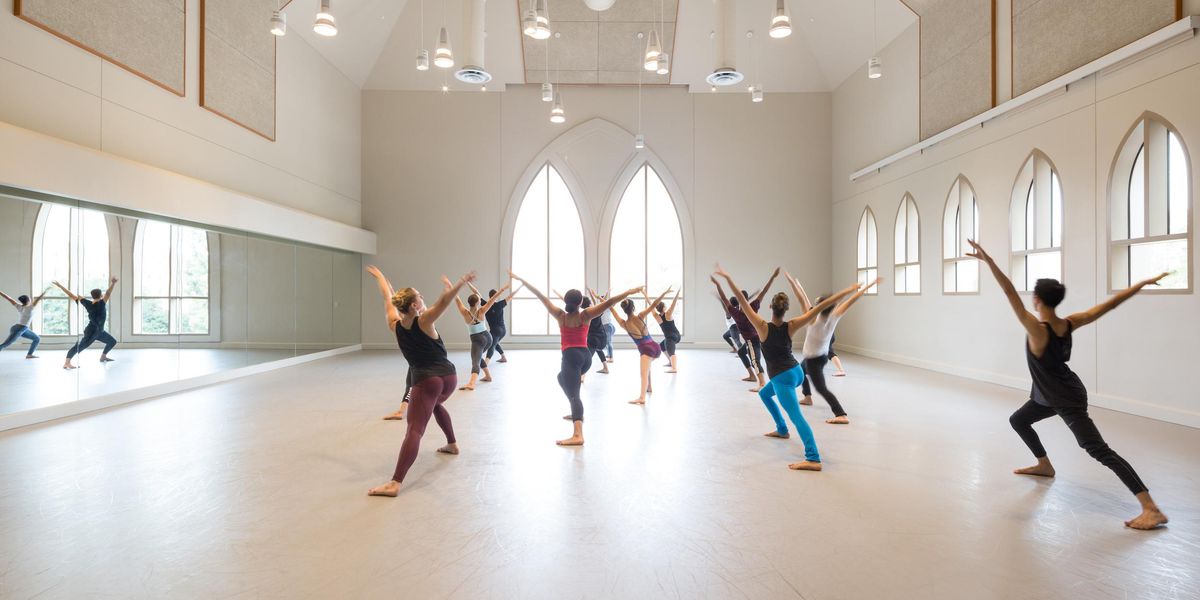A Blessing and a Curse: The Challenges of Anatomical "Gifts"
If you are lucky enough to have any of the desired “perfect dancer-body” traits—like high arches, a bendy back, hyperextended legs or long lines—it’s fair to say that your peers are envious. But what they may not realize is that these blessings come with serious challenges. You often need to work harder to build extra strength. Otherwise you won’t be able to harness the power of those gifts, and you could do serious damage to your body.
The Gift: High Arches
Beyond being aesthetically pleasing, flexible feet and high arches allow dancers to better articulate their feet and find an easier balance on pointe. But that comes with less stability in pointe shoes, which can lead to injury.
Dancers with very high arches should have a PT examine their feet in pointe shoes to make sure they are tight enough to provide support. For dancers with bendy feet, a loose shoe tends to put too much pressure on the second and third metatarsals. You might need an extra piece of elastic to extend the shoe’s vamp and keep your foot from falling out.
Annette Karim, a Pasadena-based physical therapist and ballet teacher, says dancers with high arches are also vulnerable to injuries in the mid-foot. They form when the wrong part of the foot absorbs the shock of a jump.
Countering this starts with making sure the tripod of the foot—the first metatarsal, fifth metatarsal and heel—is fully on the floor while dancing, says Karim. Support your turnout from your deep hip rotators to avoid rolling in.
The Gift: Hyperextended Knees
They help create gorgeous lines, but hyperextended knees require extra care. “A hyperextended leg is weaker than a line that’s straight from hip to knee to ankle,” says Ana Marie Forsythe, who teaches Horton technique at The Ailey School. Dancers often push too far beyond the knee, which strains the joint and throws off your center of gravity. That imbalance trickles to other parts of the body, making many movements more difficult to achieve.
To combat this, focus on maintaining correct leg alignment, using the quadriceps and building core strength. Also pay attention to how you stand in casual situations—and never lock the knees back. To find your own anatomically correct leg alignment, Forsythe suggests sitting on the floor with the legs stretched out in front of you and feet flexed. If your heels pop up, you’ve hyperextended your legs. At the same time, the knees should not feel bent, but the legs should feel stretched long with quads extended.
Then, translate this feeling to your standing position. “You want to feel lengthening and stretching,” says Dalia Rawson, director of the Silicon Valley Ballet School. “Make sure to think about the leg grounding down into the floor while also lengthening up. It will help you find a solid base.”
The Gift: Long Limbs
Long lines are like the holy grail of dance—but they can also make dancers feel uncoordinated, which stems from a lack of control. Rawson says if this is an issue, it can be beneficial to take a step back and work on simplified barre exercises, especially if you’re going through a growth spurt.
For strengthening, Karim recommends strategic bodywork that concentrates on the kinetic chains of the body, the muscular connections between the extremities. Try this: Grab a Thera-Band with your right hand and stand on the other end of the band with your left foot. With the band slightly in front of your body, pull it upward on a diagonal, feeling the connection between the opposite sides of your body. Then, try the same exercise with your other hand and foot, noting the difference.
Also, practice modified planks. Unlike single-plane strength training, these coordinate whole-chain partnerships between muscle groups: On your elbows with your right leg in a turned-out arabesque, move to a side plank on your left arm, transitioning your right leg to passé. Then, développé to the side before moving back into passé and then into front or back attitude, reaching your top arm in the opposite direction of the working leg.
The Gift: Hypermobile Back
A flexible back is one of the most eye-catching traits a dancer can have—but also one of the most vulnerable to injury. “We get a lot of dancers with L-6, L-5 fractures,” says Karim. “That can happen if you don’t strengthen and support through the full spine.” Apart from sudden injuries, chronic lower back pain is common.
The answer here lies in building strength not only in the back, but also in the abdominals, including the lower abs, plus the psoas and external obliques. But strength is nothing without good alignment of the rib cage and shoulder blades. To find it, stand straight, legs in parallel, with your back against a wall. Slide down into a small squat, breathing and bracing your abdomen to make sure your lower back remains against the wall. Pull the shoulders back so you have good posture, and close the rib cage. Try to retain this feeling of supported length while standing at the barre.




